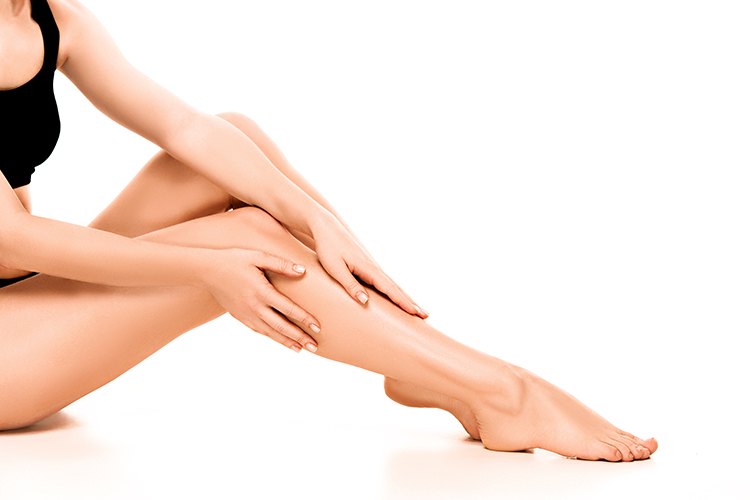Leg Aesthetics

Leg Aesthetics
Why is Leg Aesthetics Necessary?
Conditions such as collapses due to impacts to the knees and legs in the past, contour disorders, crooked legs or thick legs may require leg aesthetics. Different treatment methods are applied for each condition. Such defects can be corrected by restructuring the legs in accordance with gender and weight and in proportion to the body.
The desire to look perfect is one of the things that both women and men dream of the most today. The variety of aesthetic applications performed for every part of the body, from the toes to the hair, is increasing day by day. If there is an area on your leg that you define as "defective", you can benefit from various applications and leg aesthetics methods that may or may not require surgery.
Correction of leg defects that prevent many women from wearing dresses, skirts, tights and even boots is possible with aesthetically successful procedures. Sometimes, rapid weight gain and loss cause sagging and loosening of arms and legs. Congenitally, in some patients, one leg may be asymmetrical compared to the other. In such cases, leg aesthetics can be a saving solution.
Leg Lift Aesthetics
Leg aesthetics may be necessary depending on aging, genetic predisposition, frequent weight gains, permanent consequences of polio, trauma and some other factors. The most preferred method for sagging after aging and excessive weight loss is intra-leg stretching aesthetics. Most of the patients in leg lift surgery complain that their legs rub against each other while walking and have problems wearing skirts or shorts. Intra-leg stretching aesthetics may be suitable for these patients. Intra-leg stretching aesthetics is performed under general anesthesia. In this operation, a surgical incision is made in the groin area to be hidden. The sagging skin is removed from the inside of the legs. Patients can return to work life within 7 days after the operation. Surgical scars begin to lighten from the 2nd month and usually become very vague by the end of the 1st year. If there is a lot of sagging in the front and inside of the leg, then a vertical scar up to the knee may be necessary on the inside of the leg.
Leg Shaping Aesthetics
Leg shaping aesthetics; It is made using an implant to thicken the inner parts of the calf area. The thinning of the calves can be caused by polio disease, trauma and congenital-developmental reasons. Some patients also want augmentation in the calves to look much more athletic. The implants used for calf augmentation are inserted from the inner back of the knees. Leg shaping aesthetic operations usually take 60 minutes and are a procedure with high patient satisfaction. However, it is necessary to rest for a few days after the surgery.
Which Method is Used in Leg Aesthetics?
Leg aesthetic applications can be applied in many different ways according to the needs of the patient. Filling, implant or fat injection methods can be used. Implant applications are performed under general anesthesia and in a hospital environment, and the operation takes 45-60 minutes on average.
Filling applications are known as non-surgical applications in leg aesthetics. These applications do not provide a lifetime solution, they must be renewed every 1-2 years on average. In fat injection applications, fat tissue is taken from the patient and injected into the required area. Sometimes it may be necessary to give oil several times in order to obtain satisfactory results with oil injection. Filling applications in leg aesthetics can be done in combination with liposuction, and the number of sessions required varies according to the structure and thinness of the leg.
Healing Process After Leg Aesthetics
The recovery process after leg aesthetics varies according to leg aesthetic applications. Most treatment options have a short recovery time. Some do not require hospitalization after treatment. Sometimes, overnight hospital stay may be required due to anesthesia. In addition, in some leg aesthetic applications, it is recommended that patients restrict their movements for a while. It is necessary to keep the legs elevated for a few days after the operation.
Avoiding long walks and sports activities for the first 4-6 weeks will speed up the healing process. After treatment, swelling or bruises may occur on the legs; however, these complications usually disappear within 1-2 weeks. If your doctor recommends it, you may need to use a corset during the healing process. Using a corset can help shape the treated area more smoothly, reduce swelling quickly and prevent some other problems after some leg aesthetic applications.
Comments
I have been going to this center for 3 years, the institute is easily accessible and you are always very well received there. The beautician is always smiling and listening to you. We spend a pleasant time there. I recommend this institute with my eyes closed.
Melika Indjova
The whole team is great! Really welcoming and smiling! Everything went very well from arrival to departure.
Basel Druesne
Besides the reasonable price. The welcome and hygiene were above my expectations! 5 months already happy with the result!
Benjamin Loic
I come from Spain and I had my operation with Smilexp'Hair which was perfect. They were able to put me at ease and answer all my questions even after the operation. They followed well. I really recommend Smilexp'Hair has everything it was worth premium quality because it is intervention that affects my face.